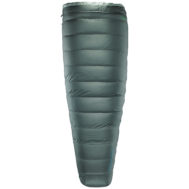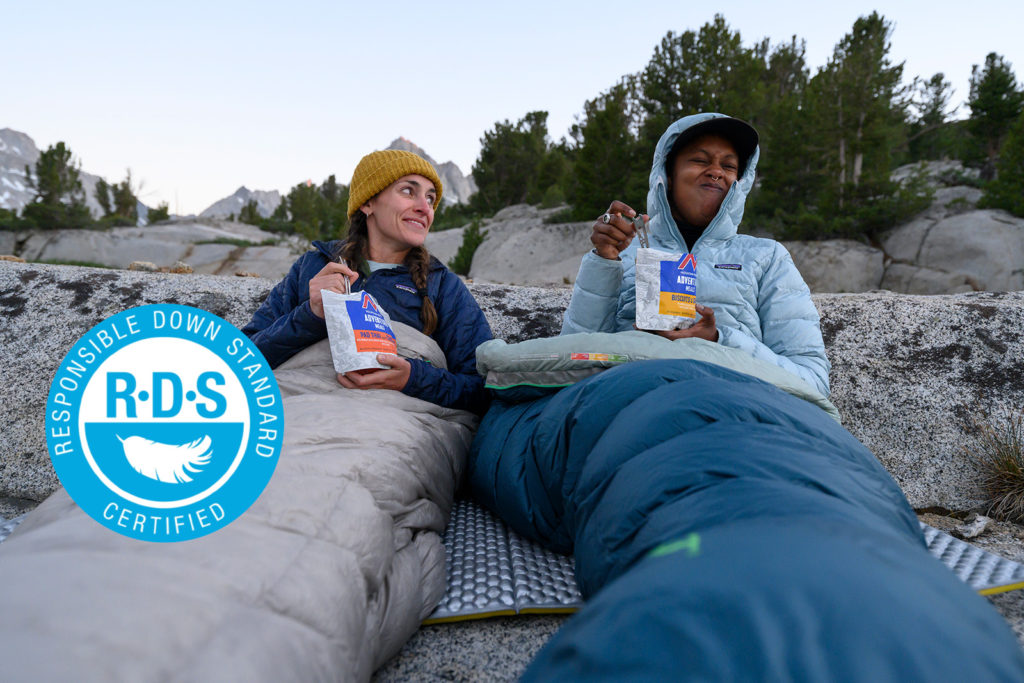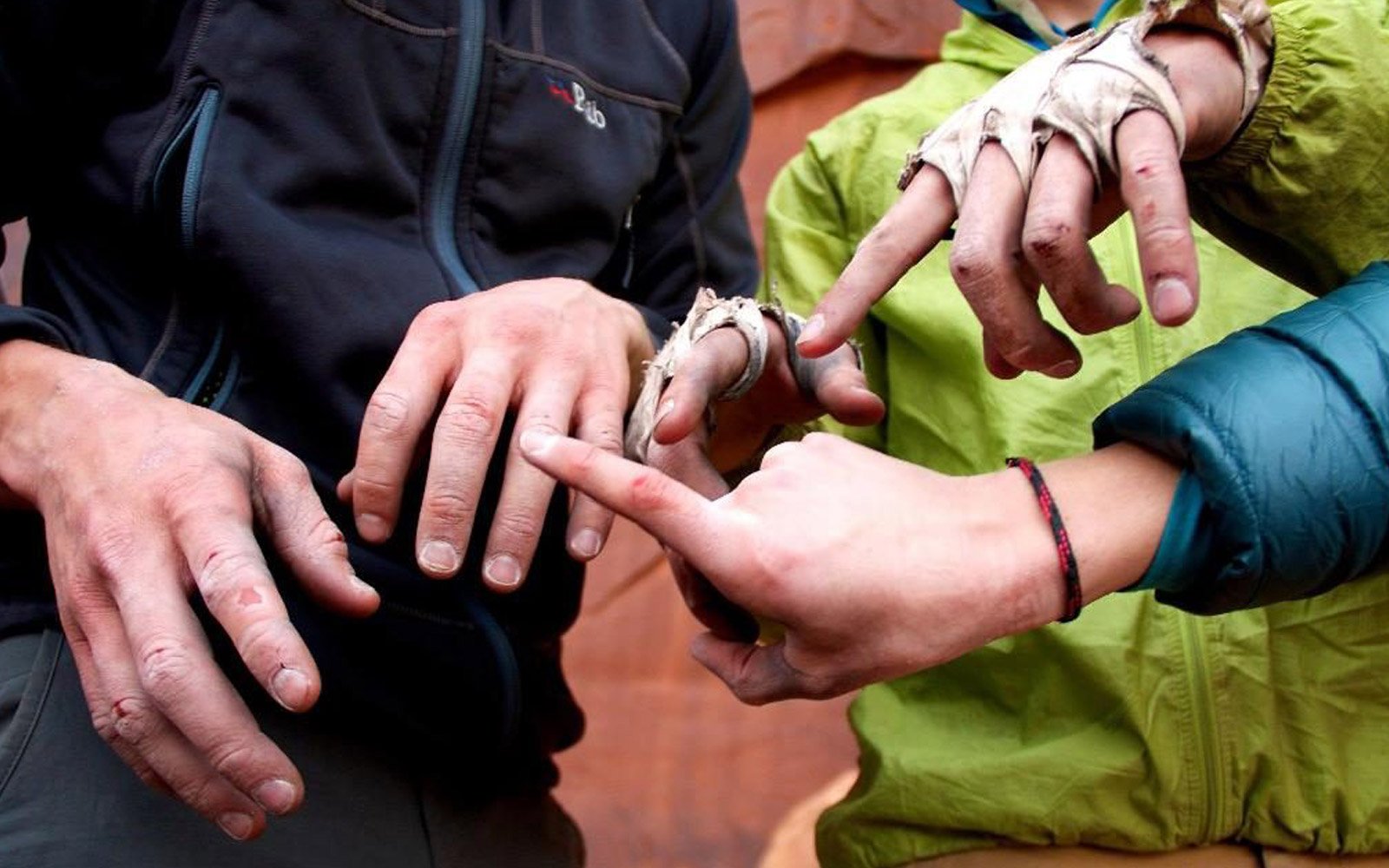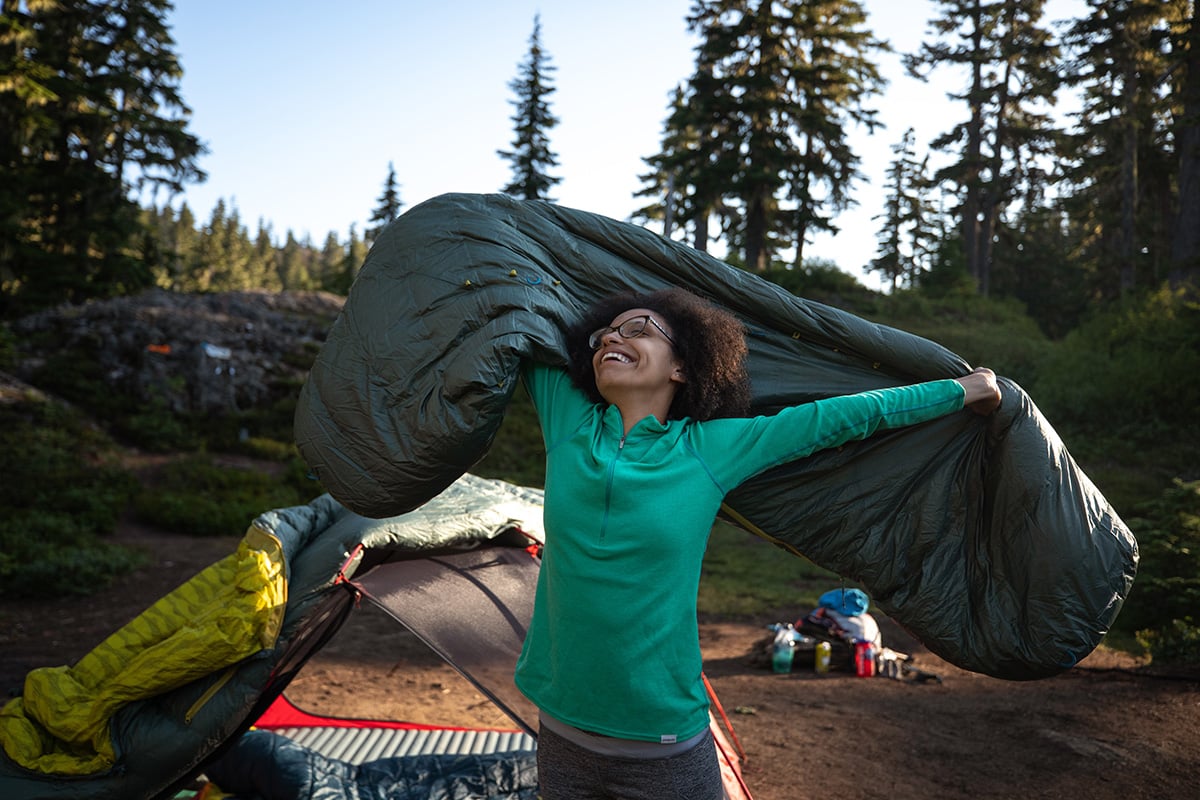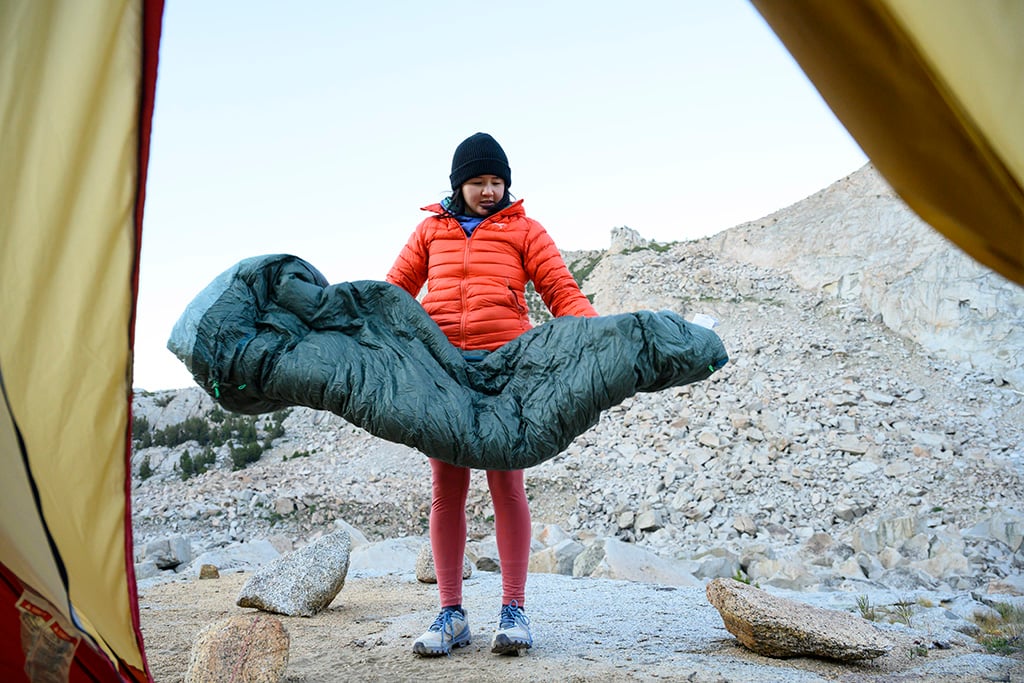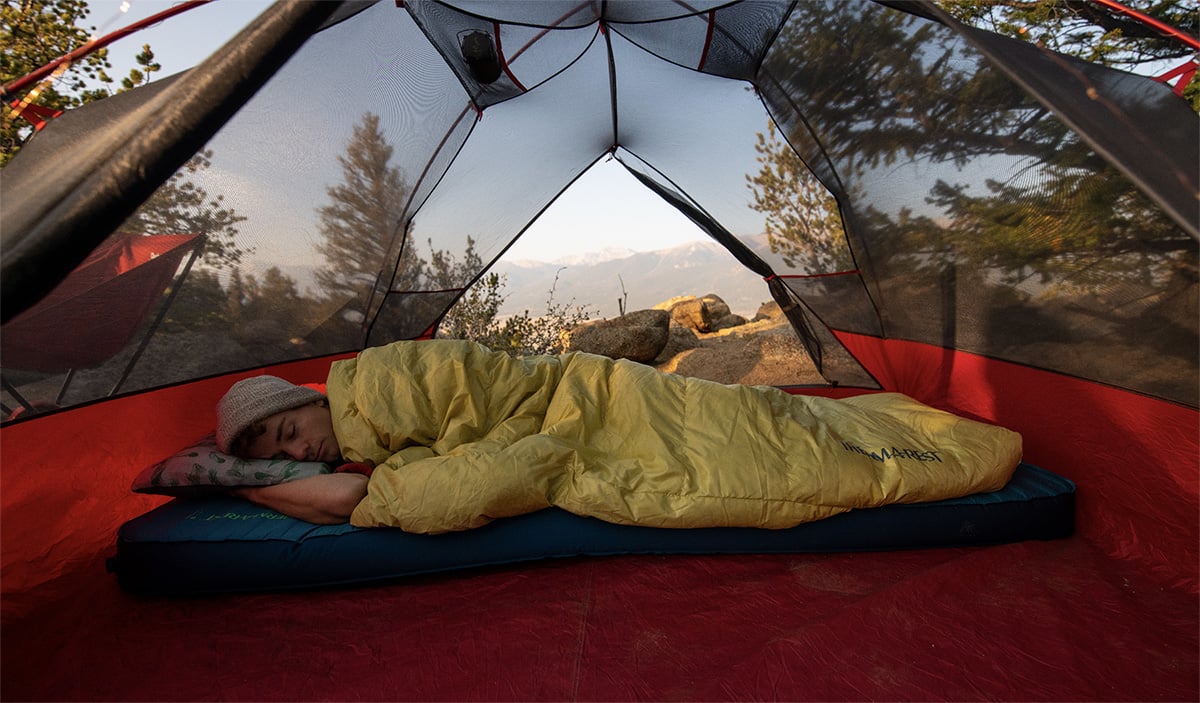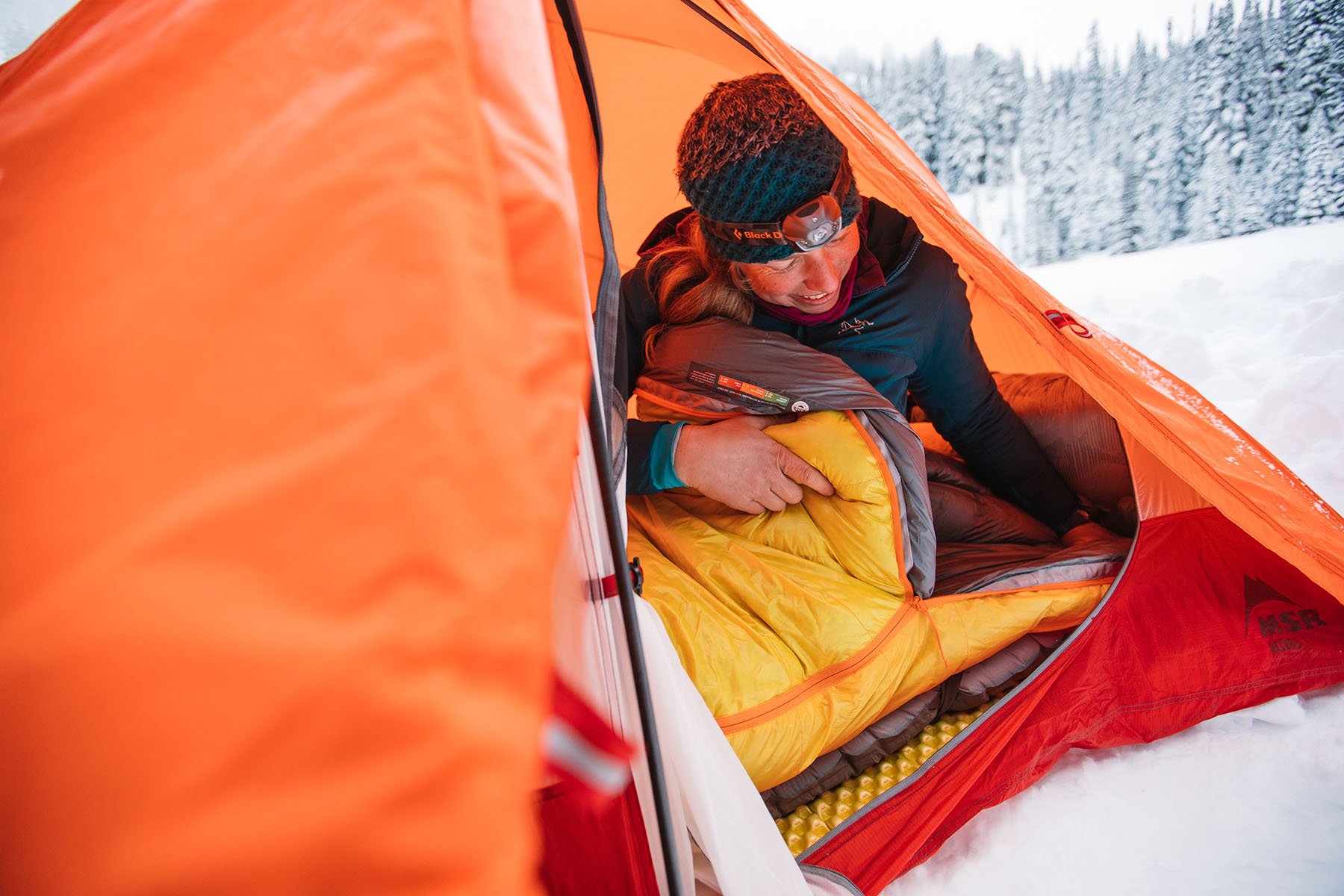A great night’s rest is the foundation of every adventure. That makes your sleeping bag or quilt one of the most important pieces of equipment in your kit, and the question of how to choose the right one, a big one.
With that in mind, we put together this guide on how to choose the best sleeping bag or camping quilt to build your ideal sleep system for any adventure. The aim is to help you understand how and why the designs of our bags—their feature sets, technologies and specifications—are suited to different types of sleepers and adventures. We will first do a run through of our lineup, then dive into discussion of features, technologies and important considerations.

Therm-A-Rest’s Lineup
Our sleeping bags and camping quilts are organized into two categories: Fast & Light and Trek & Travel. (Our sleeping pads use the same organization, but add an additional category called Camp & Comfort). Across these two categories you will find true ultralight specialists, seasonal experts, quiver killers and, ultimately, a bag or quilt that will transform your nights under the stars into the best yet.

Trek & Travel Sleeping Bags & Quilts
Trek & Travel is all about versatility and usability. It is our line of gear that brings merges high-performance, lightweight and compact features with a comfort-conscious, utilitarian philosophy. These feature-rich sleeping bags & quilts are light enough for backpacking, with added comfort for superb car camping.
| Series | Type | Models | Fit | Insulation Type | Materials |
|---|---|---|---|---|---|
Questar™ Sleeping Bag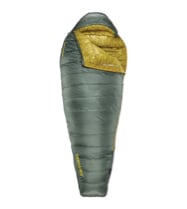 |
Sleeping Bag | 0F/-18C 20F/-6C 32F/0C |
W.A.R.M (With Additional Room for Multiple Positions) |
650-Fill Nikwax Hydrophobic Down™ | Shell: 20D polyester w/ DWR Lining: 20D Polyester Taffeta |
Saros™ Sleeping Bag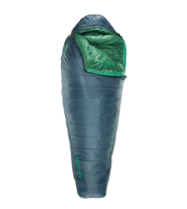 |
Sleeping Bag | 0F/-18C 20F/-6C 32F/0C |
W.A.R.M | eraLoft™ Insulation | Shell: 20D polyester w/ DWR Lining: 20D Polyester Taffeta |
Corus™ Quilt |
Camping Quilt | 20F/-6C 32F/0C |
Single | 650-fill Nikwax Hydrophobic Down™ | Shell: 20D Polyester w/ DWR Lining: 20D Polyester Taffeta |
Vela™ Double Quilt |
Camping Quilt | 20F/-6C 32F/0C |
Double | 650-fill Nikwax Hydrophobic Down™ | Shell: 20D Polyester w/ DWR Lining: 20D Polyester Taffeta |
Best For: Backpacking, car camping, paddling, bike packing, sleeping wherever you want.
Remember when we said quiver killer? We figured that was a good place to start. Affordable, comfortable, compact and lightweight, the Questar could be the first and only sleeping bag you will ever own. This critical darling would make an excellent first sleeping bag for the same reasons it brings immense value to seasoned adventurers: the premium materials, durable construction, luxurious comfort and wealth of features promise the user remarkable performance at a friendly price.
Best For: Backpacking, car camping, paddling, wet conditions, first time buyers.
The Saros packs high-utility features into a backcountry-ready, compact and rugged design. With synthetic insulation it gives up a little in the weight department, but it makes up for it by being durable and maintaining its ability to insulate when wet. Given its price point, there is incredible value packed into the Saros. It is ideal for those looking for their first sleeping bag, as well as those who need a reliable bag to pack when the forecast is wet.
Best For: Backpacking, car camping, paddling, bike packing, layering.
The 3-season Corus—like all quilts—adds a layer of versatility to any sleep system. Temperatures permitting, the Corus shines as a plush, roomy, and lightweight alternative to a sleeping bag. When temperatures drop, layer it over your sleeping bag to turn that 3-season bag into winter conquering combo. Though not the lightest quilt we make, the added width—especially in the footbox—allow the Corus to perfectly adapt to comfort-conscious car camping. If you are looking to add versatile performance to your sleep system at a friendly price, look no further than the wonderfully valuable Corus.
Best For: Duos, backpacking, car camping, paddling, bike packing, layering.
Think the Corus, but with room for two. If your adventures are shared with a certain someone, do yourselves a favor and tuck in together under one Vela Double Quilt. Quilts arose out of a pure utility design philosophy, and whether that’s in a tent, the back of a van, or at home on the couch, the Vela fits the mold. Make no mistake though, its utility does not reduce its comfort.
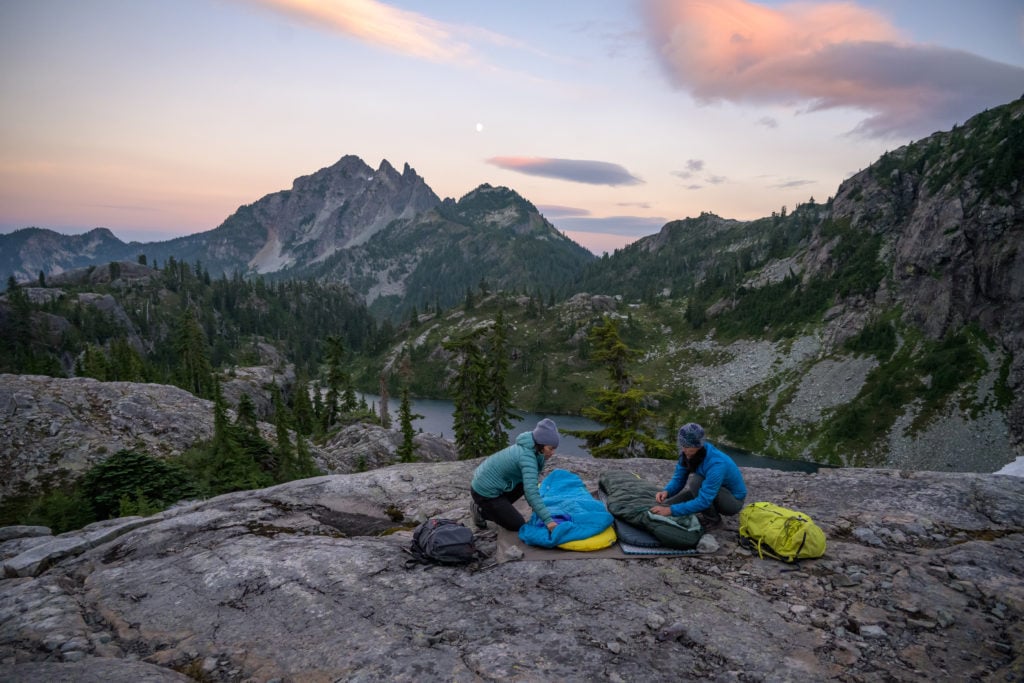
Fast & Light Sleeping Bags & Quilts
The sleeping bags and quilts in this category are purpose driven. That purpose? Ultralight, super-compact, high-performance sleep systems. Made of highest quality materials, our Fast & Light sleeping bags and camping quilts can be relied on for uncompromising backcountry performance time and time again.
| Series | Type | Models | Fit | Insulation Type | Materials |
|---|---|---|---|---|---|
Hyperion™ Sleeping Bag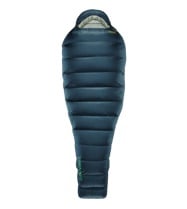 |
Sleeping Bag | 20F/-6C 32F/0C |
Ultralight Fit | 900-fill Nikwax Hydrophobic Down™ | 10D Nylon Ripstop |
Ohm™ Sleeping Bag |
Sleeping Bag | 32F/0C 20F/-6C |
Semi-Rectangular | 900-fill Nikwax Hydrophobic Down™ | Shell: 10D Nylon Ripstop w/ DWR Lining: 10D Nylon Ripstop |
Vesper™ Quilt |
Camping Quilt | 20F/-6C 32F/0C 45F/7C |
Single | 900-fill Nikwax Hydrophobic Down™ | 10D Nylon Ripstop |
Space Cowboy™ Sleeping Bag |
Sleeping Bag | 45F/7C | Performance Fit | eraLoft™ Insulation | Shell: 20D Polyester Ripstop w/ DWR Lining: 20D Polyester Taffeta |
Parsec™ Sleeping Bag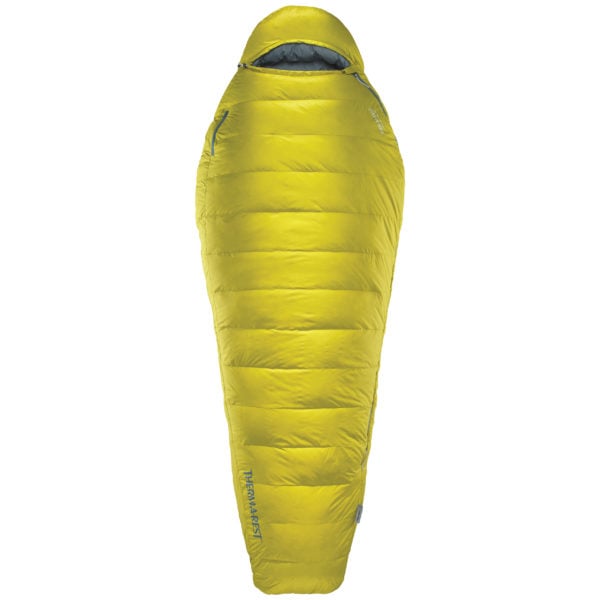 |
Sleeping Bag | 0F/-18C 20F/-6C 32F/0C |
Performance Fit | 800-fill Nikwax Hydrophobic Down™ | Shell: 20D Polyester Ripstop w/ DWR Lining: 20D Polyester Taffeta |
Polar Ranger™ Sleeping Bag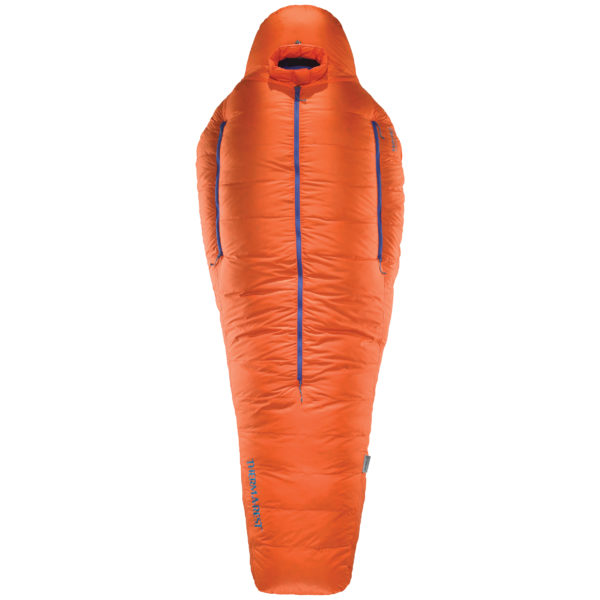 |
Sleeping Bag | -20F/-30C | Performance Fit | 800-fill Nikwax Hydrophobic Down™ | Shell:20D Polyester Ripstop w/ DWR Lining: 20D Polyester Taffeta |
Best For: Ultralight pursuits, thru-hiking, mountaineering, backpacking, paddling, bike packing.
The conundrum of ultralight gear is the sacrifice in performance and user experience in order to achieve lighter designs. The Hyperion is among the lightest and most compact bags in its class, yet thanks to design elements such as thermally efficient box baffled construction it doesn’t give up an ounce of performance. If your aim is to move quickly through the backcountry then the Hyperion is the bag for you.
Best For: Ultralight pursuits, backpacking, paddling, bike packing, sleeping anywhere you want.
Although unassuming with its classic semi-rectangular shape, the Ohm combines the design and performance principles of both sleeping bags and quilts into one incredibly versatile ultralight bag. Its shape allows for more internal sleeping space, but still keeps it ultralight. Unzip the bag all the way and you can enjoy a breathable quilt. If you bring two Ohms and a special friend, and you can zip the bags together into one cozy sleep system for two. There really isn’t an adventurer that wouldn’t add value to their kit with an Ohm, but those interested in keeping it as light and adaptable as possible will benefit the most.
Best For: Ultralight pursuits, thru-hiking, mountaineering, backpacking, paddling, bike packing, layering.
The lightest and most compact sleep system ever features a Vesper. If gram-shaving is what gets you up in the morning and keeps you up at night, this is the quilt for you. Like all of our quilts, SynergyLink Connectors integrate the quilt to your pad and sets up the side baffles to keep drafts at bay. Although narrower in the footbox than the Corus, it never feels restrictive. Get a Vesper and sleep comfortable with a system you can lose in your pack.
Best For: Ultralight pursuits, backpacking, paddling, bike packing, sleeping anywhere you want.
The Space Cowboy is a perfectly tailored go-anywhere summer adventure bag. By managing to be both ultralight and synthetically insulated, this bag will stand up the rigors of the busiest adventure season. If you need a bag for your slate of warm-weather adventures that gets the job done, check out the Space Cowboy.
Best For: Ultralight pursuits, backpacking, paddling, bike packing, sleeping anywhere you want.
No shade to the Questar, but the Parsec might be the real quiver killer; it just depends who you are as an adventurer. The slightly slimmer fit and top-shelf 800-fill down make it more compact than the Questar. The details of the bag were dialed in for fast and light backcountry pursuits. But we know some of you who fervently bag peaks and tick off trail miles, eventually end up around camp fires with your friends and a car or two parked nearby. If this sounds like you, have a good long look at the Parsec.
Best For: Arctic and Antarctic pursuits, travel in extreme cold.
If you;re looking for a bag to keep you warm in the absolute coldest environments on earth, the Polar Ranger in your sleeping bag. Working with one of the most accomplished polar explorers on the planet, Eric Larsen, we dialed in the design of this bag to maximize warmth in Earth’s coldest locales. Features like the side-vents that allow arm use outside of the bag without unzipping it, along with a draft-blocking snorkel hood make it a highly specialized sleeping bag. If you are planning a little outing to one of Earth’s poles, you’ll want to bring the Polar Ranger along.

Temperature Ranges
At Therm-a-Rest we use the most updated EN/ISO protocols to temperature rate our sleeping bags and quilts. Each sleeping bag or quilt has a designated temperature that serves as its rating. When considering the Questar 20F/-6C for example, the temptation is to assume that this bag will keep the sleeper warm at 20F/-6C no matter what. While this is going to be true in many cases, overnight warmth is more complex than that. Which is why the EN/ISO standard breaks the rating into three conceptual temperature ranges: Comfort Range, Transition Range, Risk Range.
 Comfort Range
Comfort Range
A sleeper should feel warm in the bag or quilt in these conditions.
Transition Range
The official listed temperature rating (i.e. 20F/-6C) is the bottom limit of this range. Somewhere in this range is the performance limit of the bag for most people. A warm sleeper might feel comfortable while a cold sleeper may be fighting against the cold.
Extreme Range
Beyond the performance limit of the bag or quilt. Sleeping in these conditions is dangerous. It is not recommended unless it’s an emergency.

Know How You Sleep
It is our belief that an informed customer is empowered to make the right gear decisions that result in many safe nights under the stars. That said, it is important to keep in mind that sleeping bag and quilt temperature ratings are just a piece of the puzzle. The R-Value of your sleeping pad, base layers, your diet and other factors all affect sleep warmth.
The best knowledge is knowledge of self. Knowing what kind of sleeper you are will allow you to most accurately use the temperature ratings, but that requires experience sleeping outside. If you’re here shopping for your first bag or quilt in order to gain that knowledge, a great starting point is to consider what conditions you’ll be sleeping in MOST of the time. If you’re a summer backpacker at lower elevations, a 45F/7C quilt might be the perfect thing for you. However, if you venture into the alpine frequently, or like to extend your season into the fall where freezing nights are the norm, a 20F/-6C bag might be a better choice. At some point, if you like year-round camping, you’ll need more than one solution to keep you comfortable year ’round, but aiming of that “most of the time” bag is a great place to start.

Insulation Type
There are two types of insulation in sleeping bags and quilts, down and synthetic. Both have certain benefits and certain drawbacks. Both keep a sleeper warm by lofting to create pockets of air that are then heated by a sleeper’s body heat. “Down vs. synthetic” is a classic gearhead question, and one that we wrote about in depth here. Below we will do a quick synopsis of the pros and cons of each as they pertain to our sleeping bags and quilts.
Down Insulation
Down is the soft, fluffy plumage found under the exterior feathers of a bird. It is almost always harvested from waterfowl because they produce a lot of it to insulate from cold water. At Therm-a-Rest we only use Responsible Down Standard (RDS) certified down.
Here are some quick hits on down insulation:
| Benefits of Down Insulation | Drawbacks of Down Insulation |
|---|---|
|
|
Therm-a-Rest does a lot to mitigate that first drawback by using Nikwax® Hydrophobic Down™ in our sleeping bags and quilts. While synthetic insulation is still better if your bag gets wet, Nikwax Hydrophobic Down performs 90% better than untreated down when wet. If you are adventuring in wet forecasts but still want the warmth-to-weight performance of down, treated down is the way to go.
Synthetic Insulation
Synthetic insulation is the human attempt to mimic naturally occurring down with synthetic fibers. Therm-a-Rest uses our proprietary eraLoft™ synthetic insulation in our sleeping bags and quilts.
Here some quick hits on synthetic insulation:
| Benefits of Synthetic Insulation | Drawbacks of Synthetic Insulation |
|---|---|
|
|
Synthetic insulation is often what people choose for their first sleeping bag because you can get a high-performance piece of gear for less money, and they are easier to care for, but that all comes at a sacrifice of weight and bulk.
Even with hydrophobic down, one should avoid getting their down sleeping bag or quilt wet. Down feathers escape through any tears or small holes, whereas synthetic does not. Down can also clump up if not dried carefully after washing, though that is relatively easy to undo. If you purchase a down sleeping bag, we highly recommend you read our guide on washing a sleeping bag. The guide goes over washing synthetic bags as well, but proper care of down bags is important to maintaining their peak performance.

Sleeping Bag & Quilt Fit
The question of how to choose a sleeping bag or quilt should always include the consideration of fit. We wrote a deeper look at sleeping bag fit here, but will do an essential overview below.
When we say “fit”, we mean more than just small, medium, and large, though size is a component of choosing the right fit. Moreover, it is important to note that all of our bags and quilts are unisex. Regardless of your sex, just go with the size that is most appropriate for your height.
Here’s a breakdown of size-to-height correlations:
- Small: 5’1” – 5’6” (156 cm – 168 cm)
- Regular: 5’7” – 6’0” (170 cm – 183 cm)
- Long: 6’1” – 6’6” (185 cm – 198 cm)
Having the wrong size bag or quilt will affect thermal efficiency. If it is too large, your body will have to expend more energy to heat the excess internal space, or not be able to heat it at all, resulting in cold spots. If it’s too small, you run the risk of not properly covering your body and creating cold spots where the insulation is compressed.
Whereas choosing the right size is objective based on how tall you are, picking the right fit profile is subjective to your preferences. By “fit profile” we are essentially referring to the internal shape of the bag or quilt. (By contrast, external shape refers to the style: mummy, rectangular, semi-rectangular).
Our sleeping bags and quilts come in three different fit profiles: Ultralight Fit, Performance Fit, and W.A.R.M. Fit. Each is tailored to different types of adventurers and sleepers.

 Ultralight Fit
Ultralight Fit
As the name suggests, this fit is all about trimming weight and compact packing. Bags and quilts with this fit are specialized pieces of gear. They are narrower throughout the shoulders, hips and footbox. Less internal space means less energy required to heat it, as well as less energy expended to carry it. It also means less room to move around and get comfy at night.
If you are all about ultralight packs for fast backcountry travel, and willing to sacrifice some comfort for it, Ultralight Fit is optimized for you. If you are a side sleeper you may feel confined in one of these bags..
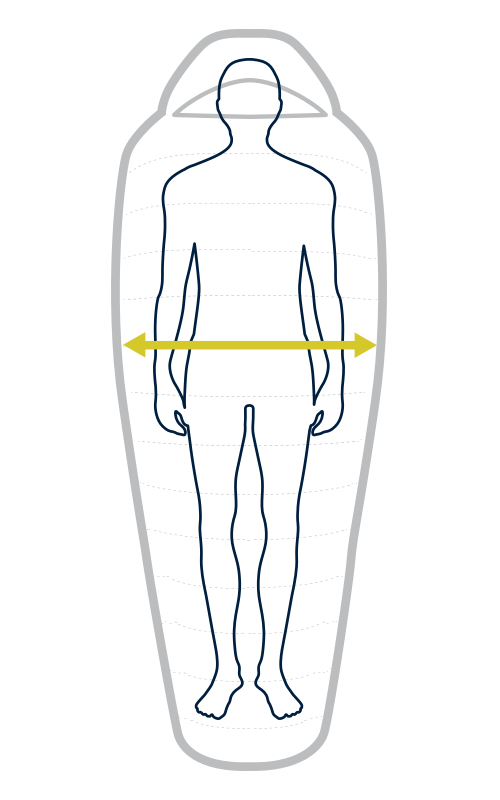 Performance Fit
Performance Fit
Like Ultralight Fit, the bags and quilts with Performance Fit are only in our Fast & Light category. The point is to provide ultralight options to sleeper profiles that require more space for better rest. Examples would be side sleepers or cold sleepers that may be donning extra layers—like a puffy jacket—for overnight warmth. The extra internal space may add grams, but that is justified price to pay if it means you will be better rested.
These bags and quilts are still compact, lightweight and altogether designed for the backcountry. Still, with a touch more room for comfort a Performance Fit piece will be better suited for weekends in the crag parking lot or general car camping than Ultralight Fit bags and quilts. If you are a comfort-conscious thru-hiker, or a backcountry traveler that knows your trip schedule includes car camping as well, performance fit is an excellent option.
 W.A.R.M. Fit
W.A.R.M. Fit
With Additional Room for Multiple Positions. It may be an imperfect acronym, but we really want you to know that the extra room in these bags and quilts DOES NOT result in cold spots (we’ll explain why in a moment). Continuing up the spectrum from Performance Fit, W.A.R.M. bags and quilts comprise the Trek & Travel line.
The concept is to offer backcountry ready sleeping bags and quilts that allow a wide range of natural sleep positions. The point of a sleeping bag or quilt (really the point of our whole company) is to achieve quality nighttime rest in the outdoors. If you are a side sleeper, an active dreamer, or a position pluralist a narrow sleeping bag can be really frustrating (or downright claustrophobic) and rob you of good, solid sleep.
W.A.R.M. Fit bags are great for backcountry travelers that move around in their sleep, or are otherwise uncomfortably confined by narrow bags, and willing to add some weight for better sleep. What’s more, these bags and quilts are well suited for frontcountry adventures. When weight and packed size are of lesser concern, why not prioritize comfort? If your adventure calendar has you backpacking deep into the wilderness but also spending quality time car camping with friends, W.A.R.M. Fit is a strong choice for you.

The Sleep System Design Philosophy
But what about cold spots? Good question, here’s the answer: The reason we are able to offer spacious W.A.R.M. Fit bags and quilts that are light enough for backcountry use and still thermally efficient, comes down to a series of design choices and features that lean into the concept of a sleep system. It is about maximizing the strengths of each system component as efficiently as possible.
It is not just our W.A.R.M. fit bags that incorporate this design philosophy. All of our fits and models are informed by building them to be components of a system. The easiest way to understand what this means is by understanding what makes camp quilts so special.

The Quilt Revolution
Quilts are much lighter and more compact than sleeping bags because, more or less, they are half a sleeping bag. By relying on the R-Value of the sleeping pad, a quilt does away with the insulation on the bottom without giving up warmth. Likewise, a quilt forgoes a hood and instead relies on a pillow and perhaps a beanie to insulate the head. Without a pad or a pillow, a quilt is dangerously useless; as a part of a system, it is a game changer.
We mapped that concept onto our sleeping bag line to create lighter, more comfortable bags that don’t sacrifice performance. Here are the specific features that get it done.
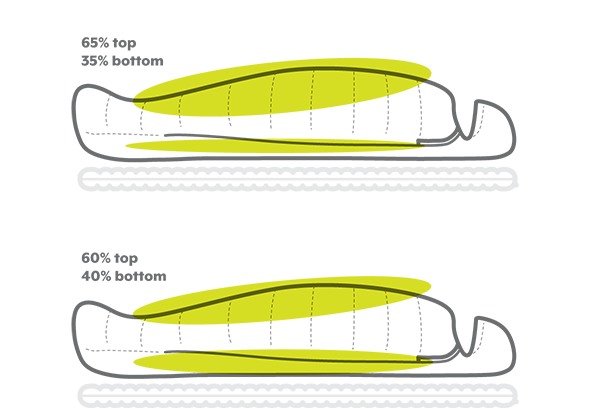 Zoned Insulation
Zoned Insulation
Zoned Insulation is the prioritization of insulation (down or synthetic) to the areas of the bag or quilt where your body needs it most.
Insulation on the bottom of a sleeping bag becomes compressed under the weight of your body. This results in fewer air pockets and a significant decline in its ability to insulate. So, we reduce the amount of insulation on the bottom accordingly, which saves weight and gives us the option of adding more insulation to key areas on the top of the bag. Examples of key areas would be through the chest and torso section and the heat trapping draft collar.
Zoned Insulation works by relying on the R-Value of your sleeping pad for warmth. Realistically then, question, “how to choose a sleeping bag?” also asks the question, “how to choose a sleeping pad?” You will need the right pad for the job to make the system work.

SynergyLink Connectors
If you are going to be relying on the R-Value of your pad for warmth, then you do not want to shift or fall off your pad in the night. SynergyLink Connectors are straps attached to our bags and quilts that wrap under the pad and hold the sleeper securely on top of it throughout the night. Compared to other systems on the market, our connectors keep you on your pad without constricting your movement.

Quilt and Blanket Loops
Building a personalized sleep system allows an incredible amount of versatility due to the principle of layering. Many of our sleeping bags have built-in quilt and blanket loops along each side of the bag for securing one of our quilts or blankets to the top of your bag in order to boost warmth. On cold nights a securely integrated quilt cab mean the difference between sleep-defeating cold spots and a comfy, thermally efficient night.

Footboxes
Therm-a-Rest quilts have thoughtfully shaped footboxes to ensure a secure fit all night long. On the Corus, the footbox is roomy enough that you can tuck the end of an XLite pad in it. On the narrower Vesper, the footbox offers a snug, fast warming pocket for your feet. If you are layering over a sleeping bag, the quilt footboxes will easily fit around your sleeping bag.
Some of our bags—like the Questar and Parsec—feature the Toe-asis™ Foot Warmer Pocket. This delightfully luxurious pocket just for your feet, ensures your they are warm, toasty, and not forgotten. Though not really a feature dependent on the sleep system design philosophy, the Toe-asis adds revelatory comfort to our bags without adding significant weight. The goal of a sleep system is high performance rest, and our little foot pocket fits the description.
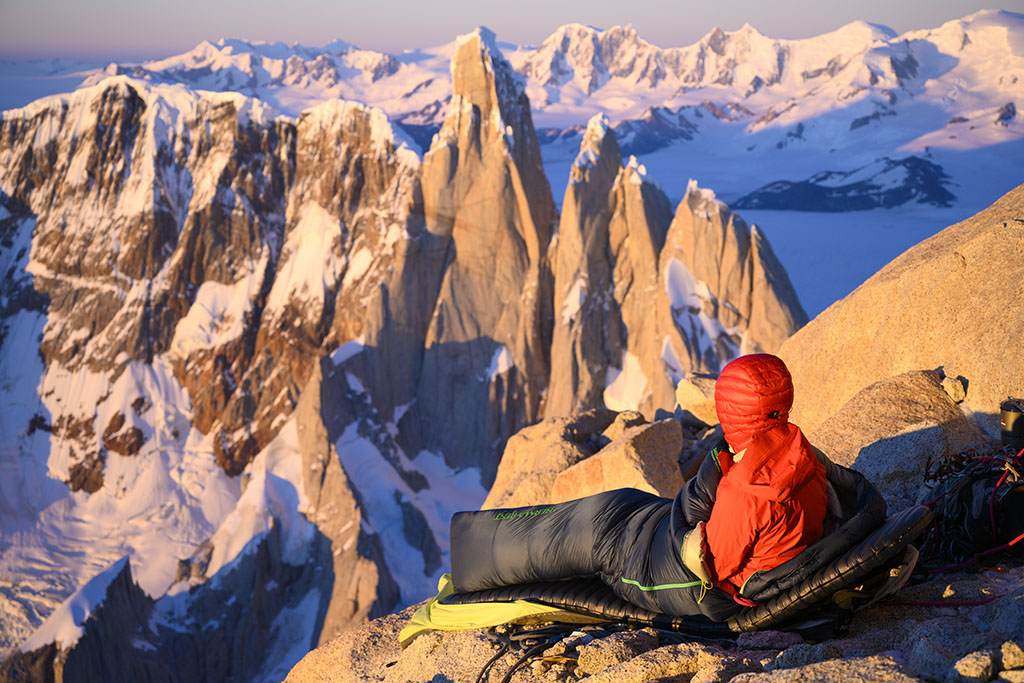
Regarding Environmental Impact
Lastly, when you ask yourself how to choose a sleeping bag, we hope that a consideration of environmental impact is factored into your decision. A point of contention in outdoor gear manufacturing is the difficulty in reducing negative environmental impacts in the supply chain. The simple truth you should know as a customer is that high-performance materials can be environmentally demanding.
For example, polyester—the world’s most commonly used fiber and prominently used across the outdoor industry including several of our bags and quilts—has a high environmental impact in several ways. Still, polyester makes the lightweight, durable performance that today’s adventurers have come to expect from their gear possible. That said, we are constantly working to improve our supply chains and diminish our environmental impact so that high-performance doesn’t come at high cost to the natural world.
 One way that we minimize the impact of our sleeping bags and pads is by only using RDS certified down. RDS stands for Responsible Down Standard, and is a voluntary standard that ensures the waterfowl that supply our down are treated humanely. There is no requirement for us (or anybody else) to adhere to this standard, but it is an obvious choice for us to do so.
One way that we minimize the impact of our sleeping bags and pads is by only using RDS certified down. RDS stands for Responsible Down Standard, and is a voluntary standard that ensures the waterfowl that supply our down are treated humanely. There is no requirement for us (or anybody else) to adhere to this standard, but it is an obvious choice for us to do so.
An often overlooked but essential environmental consideration is how long will your gear last? Blown out and damaged gear heading to the landfill is something we make great efforts to avoid. Since 1972, our products have only been made with the finest materials, with a central focus on durability and repairability. Our sleeping bags and camping quilts demonstrate the legendary, long-lasting build quality for which we are known.
Our gear is made to last, yes, but it is also made to be used. We want you tucking into your sleeping bag or quilt for as many nights under the stars that you can muster. Damages happen. Zippers get caught, tears spring up, down leaks, etc… When this happens there’s no need to buy a new bag. We have a full service repair facility at our Seattle headquarters fully capable of making your weathered bag whole again. That way you can keep the gear you know and trust out of the landfill and in your backpack.

Why a Therm-A-Rest Sleeping Bag or Quilt?
We covered a lot, and while we hope it was clear, comprehensive and helpful, we fully understand that choosing the right sleeping bag is quite literally a decision you will have to lie in. If you have questions, our knowledgeable customer service staff is happy to answer any questions that will allow you to make a confident decision.
Even confident decisions sour from time to time, we get it. Sleep is the essential foundation of each day outside, and you having the best sleep possible is your goal and ours. Which is why we offer the Better Sleep Guarantee. If you are not satisfied with your sleeping bag or quilt, return it within three months with proof of purchase and we will refund you, no questions asked.
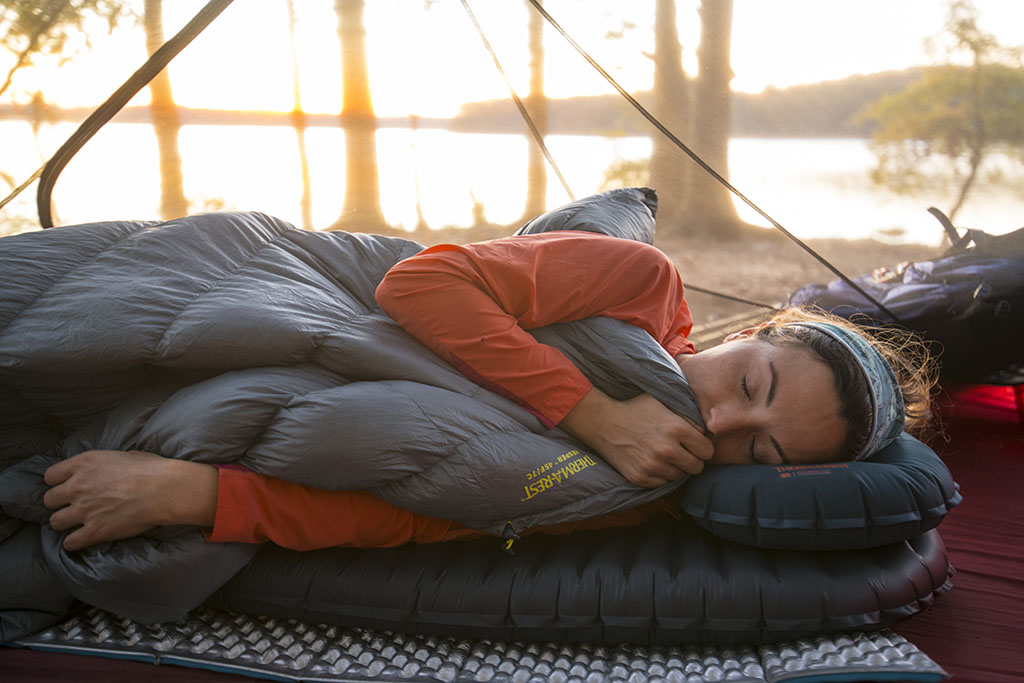
Since 1972 we have been trailblazing better sleep outdoors, and we have no plans on stopping. Moreover, we seek to build essential knowledge in our customer base because every aspect of your adventure—from prep and purchases to execution—should be a positive, affirming experience. Thank you for reading, if you have any thoughts please leave us a comment or get in touch!
Related Posts:
- How to Choose the Right Sleeping Bag Size, Shape & Fit
- Down vs. Synthetic Sleeping Bags & Quilts Insulation
- 3-Season Sleeping Bags vs. Winter Sleeping Bags
Updated. Originally Published December 3, 2020.


